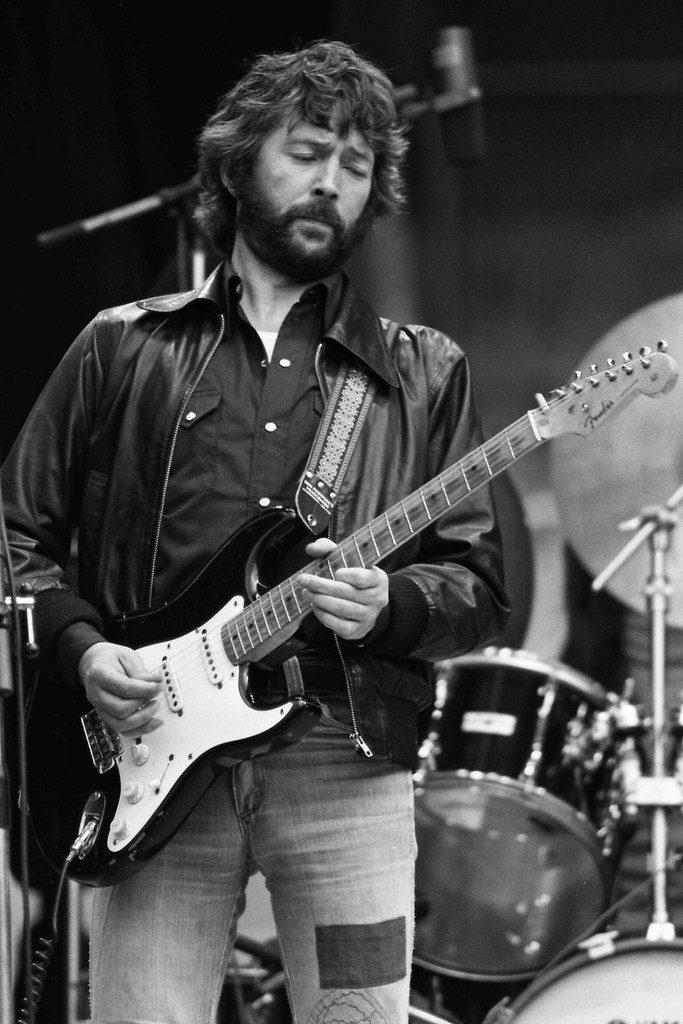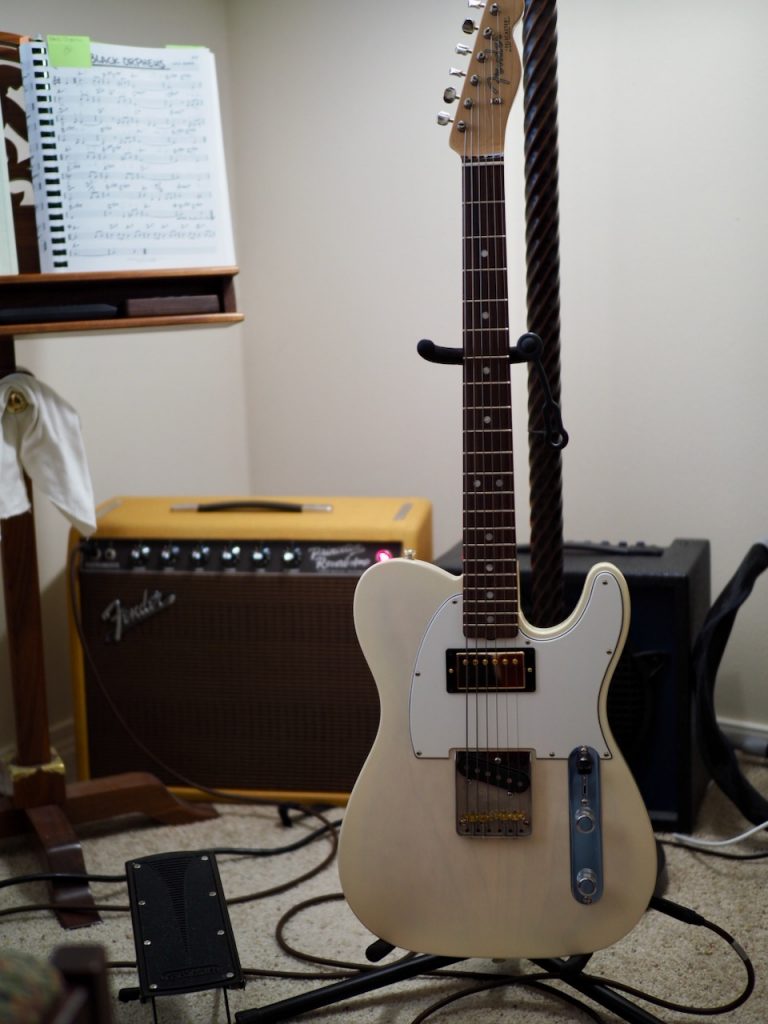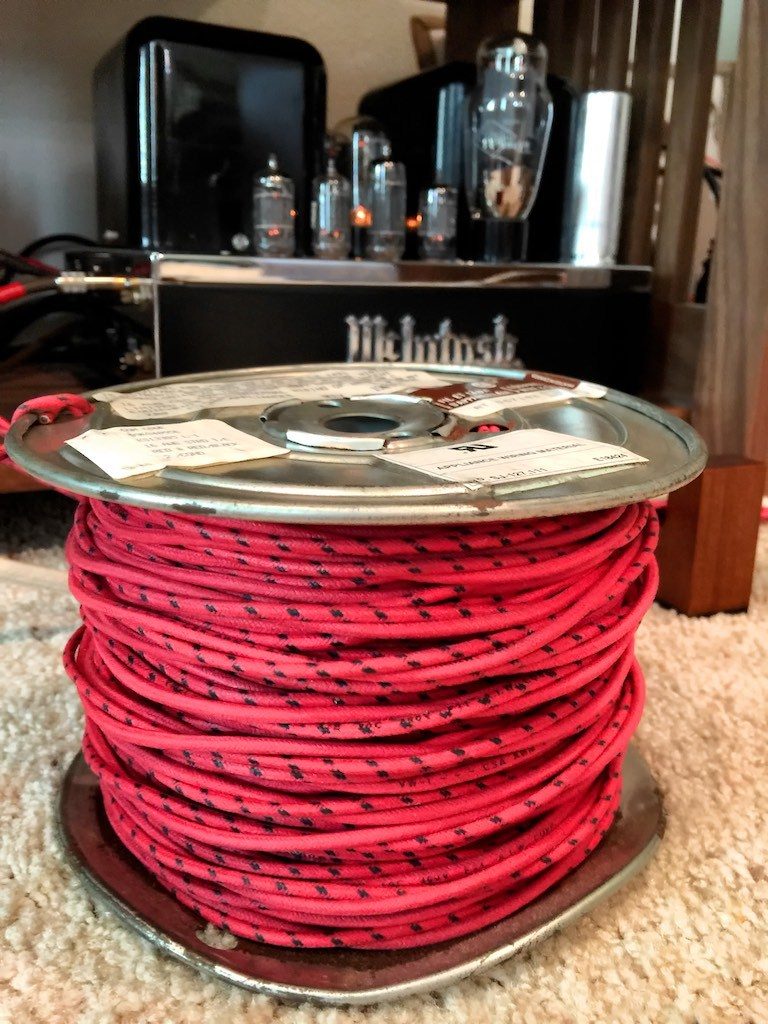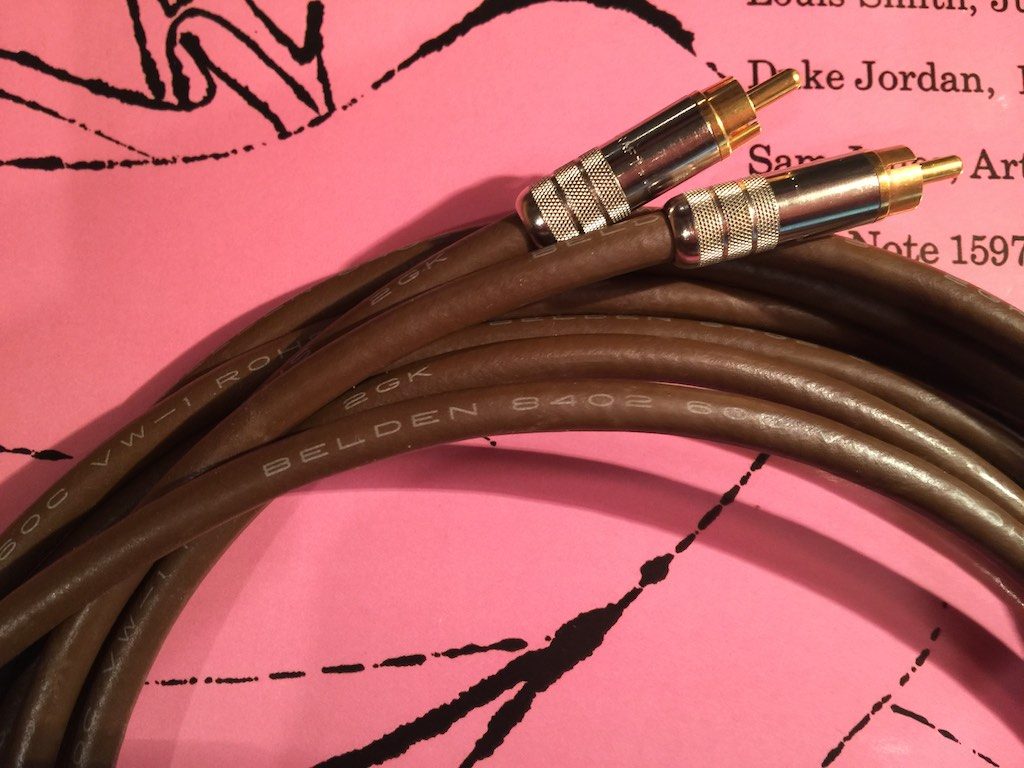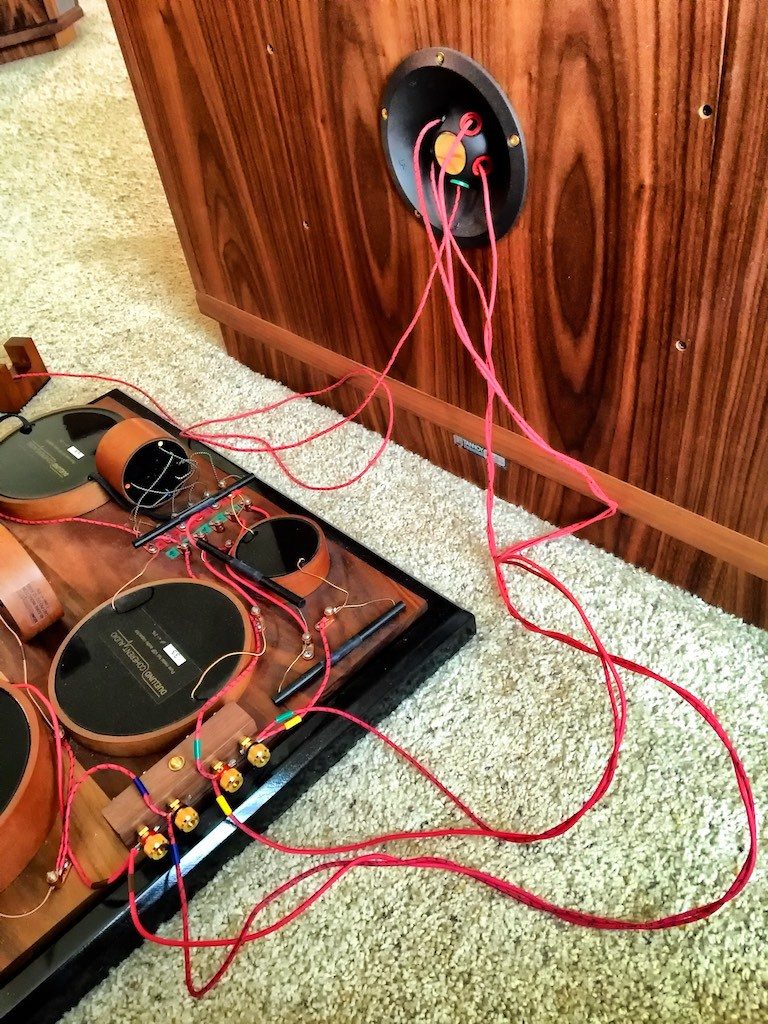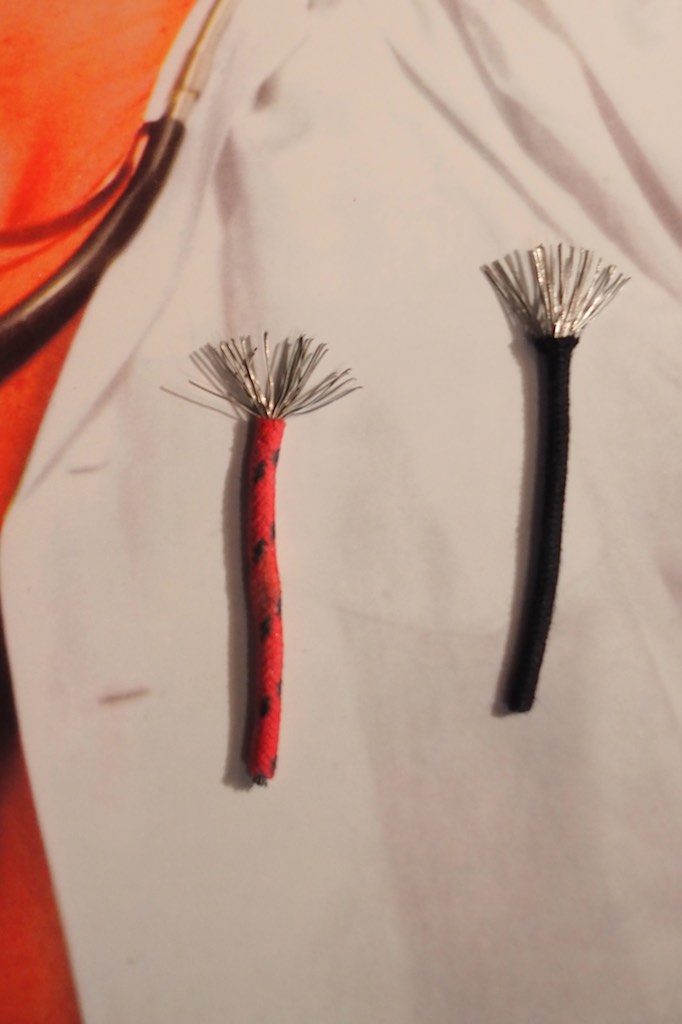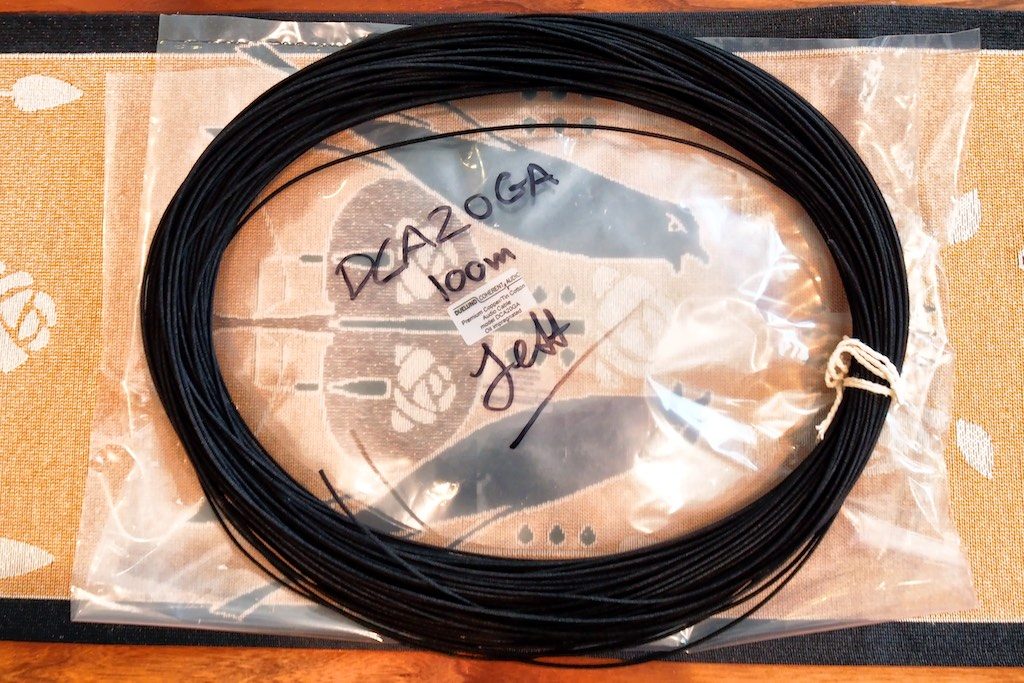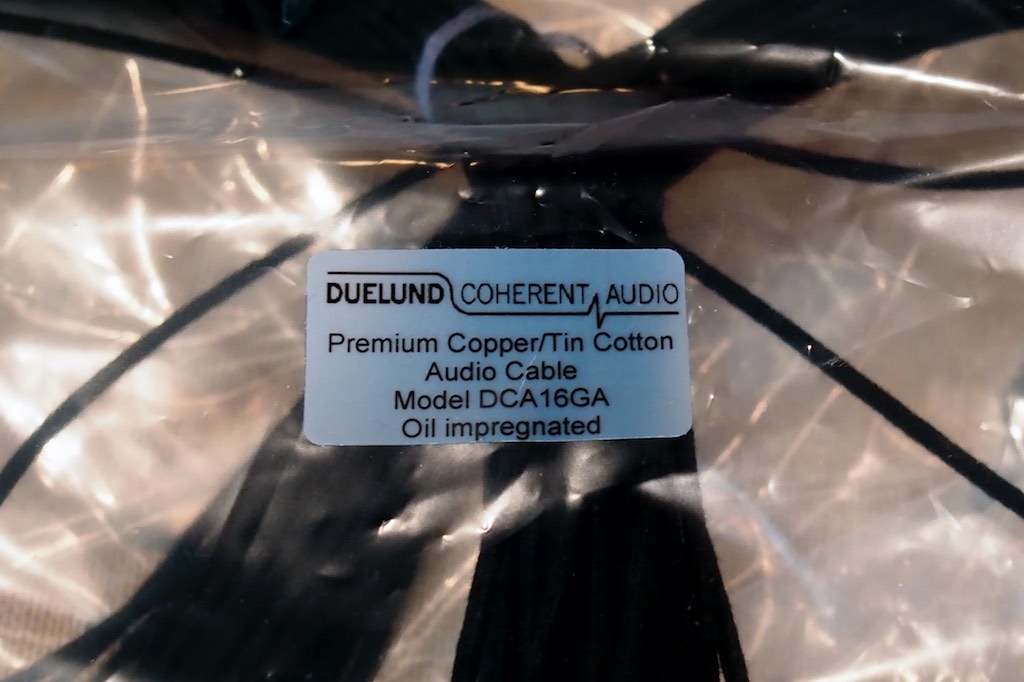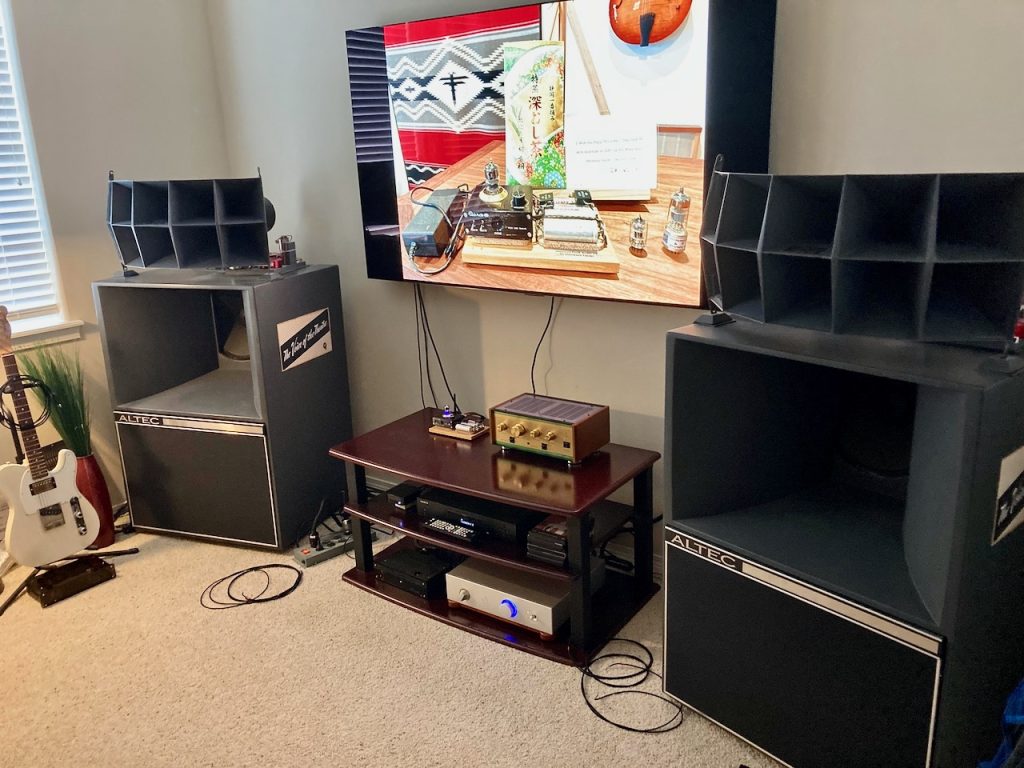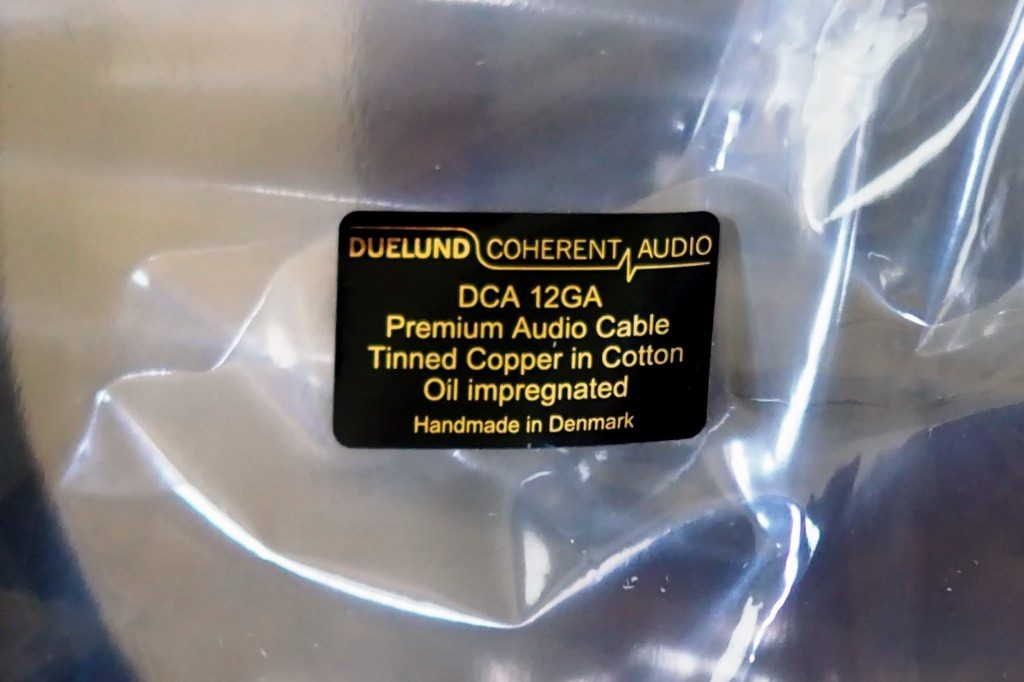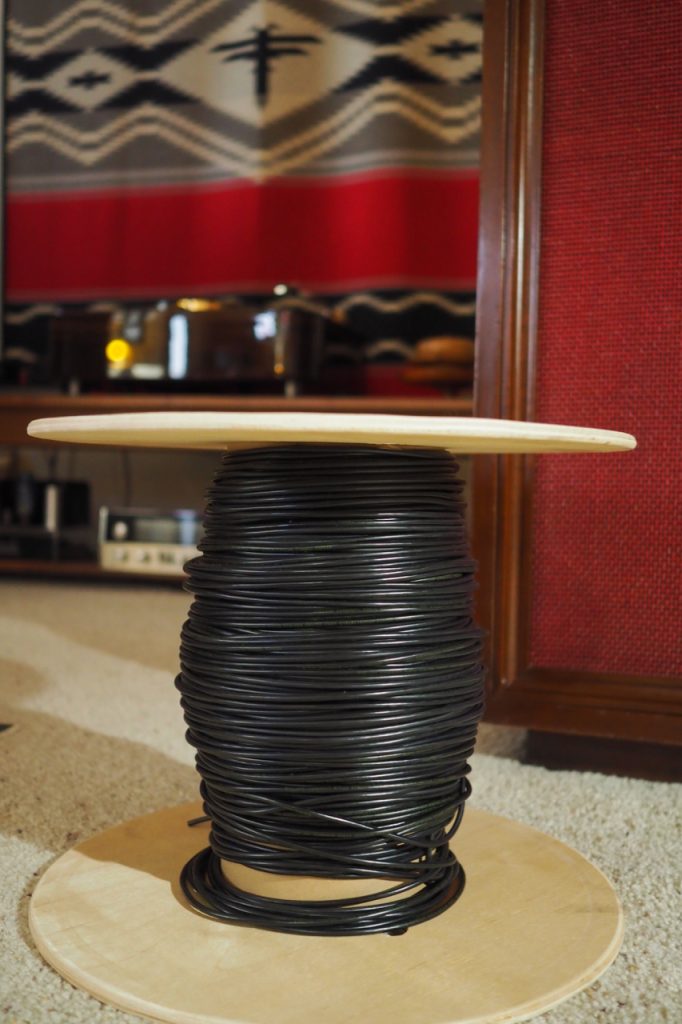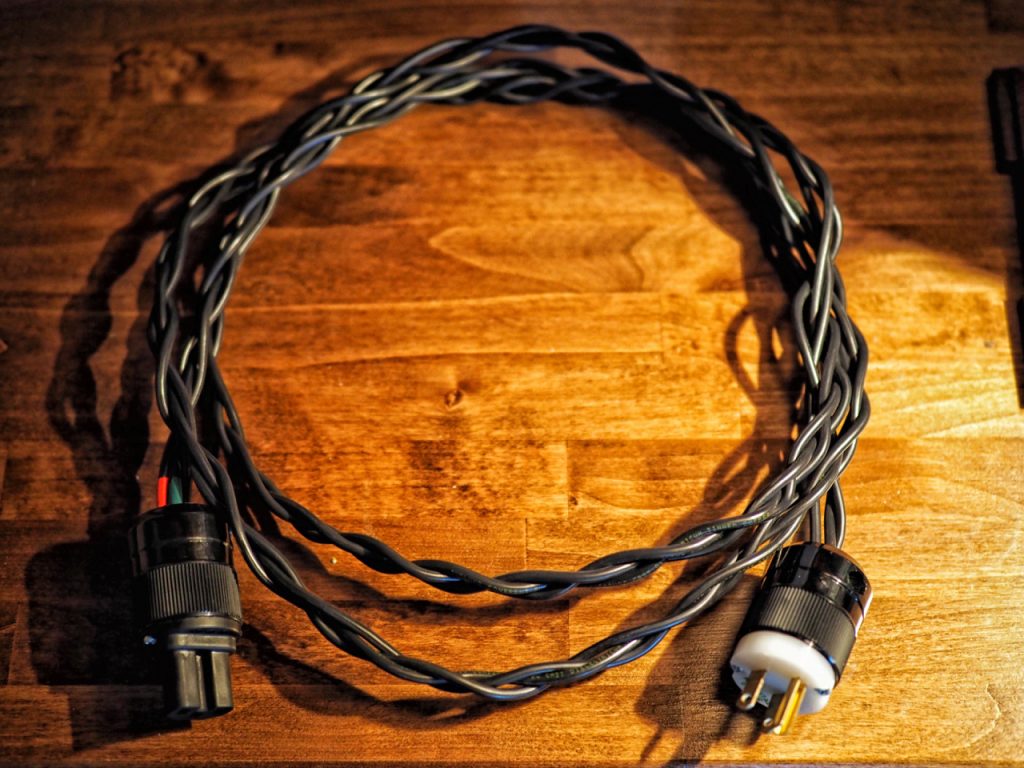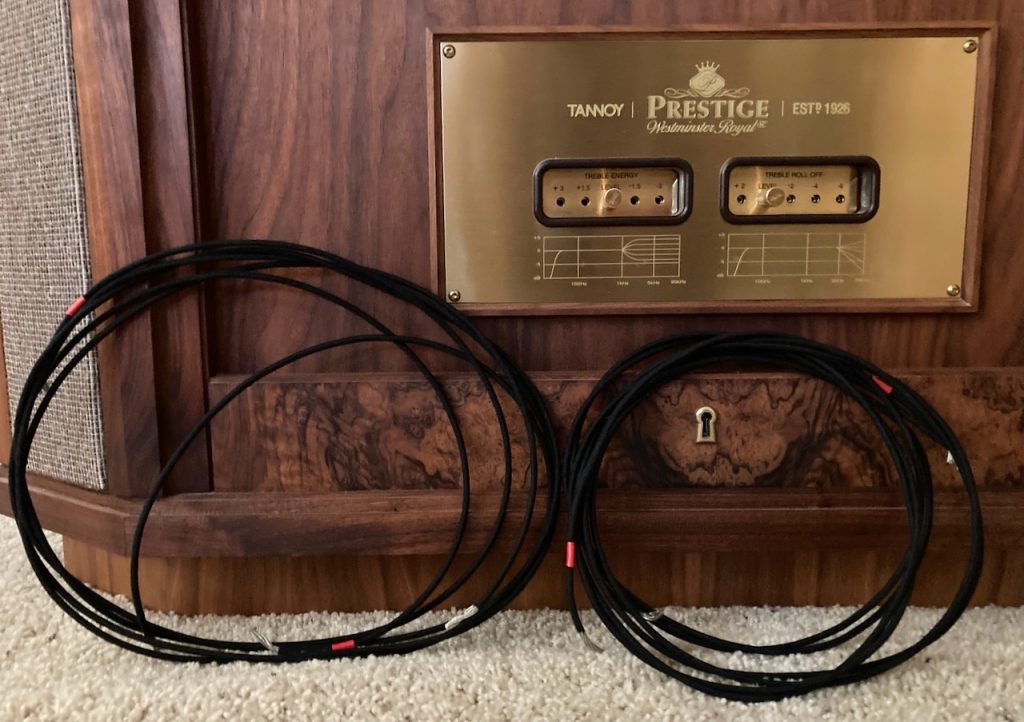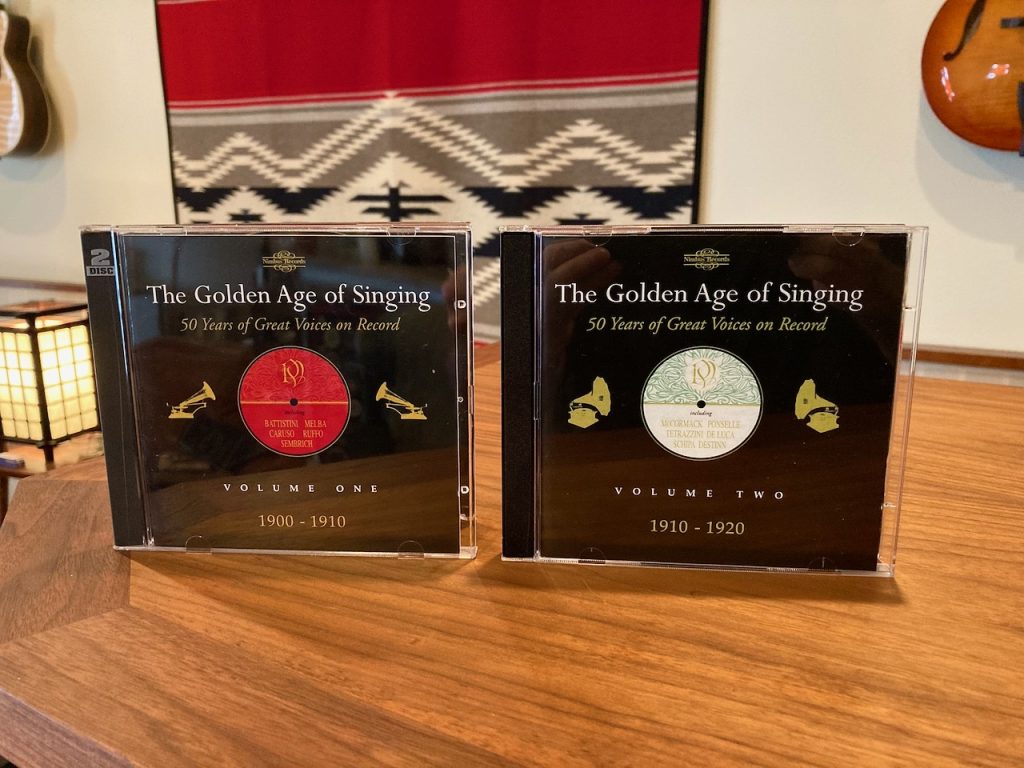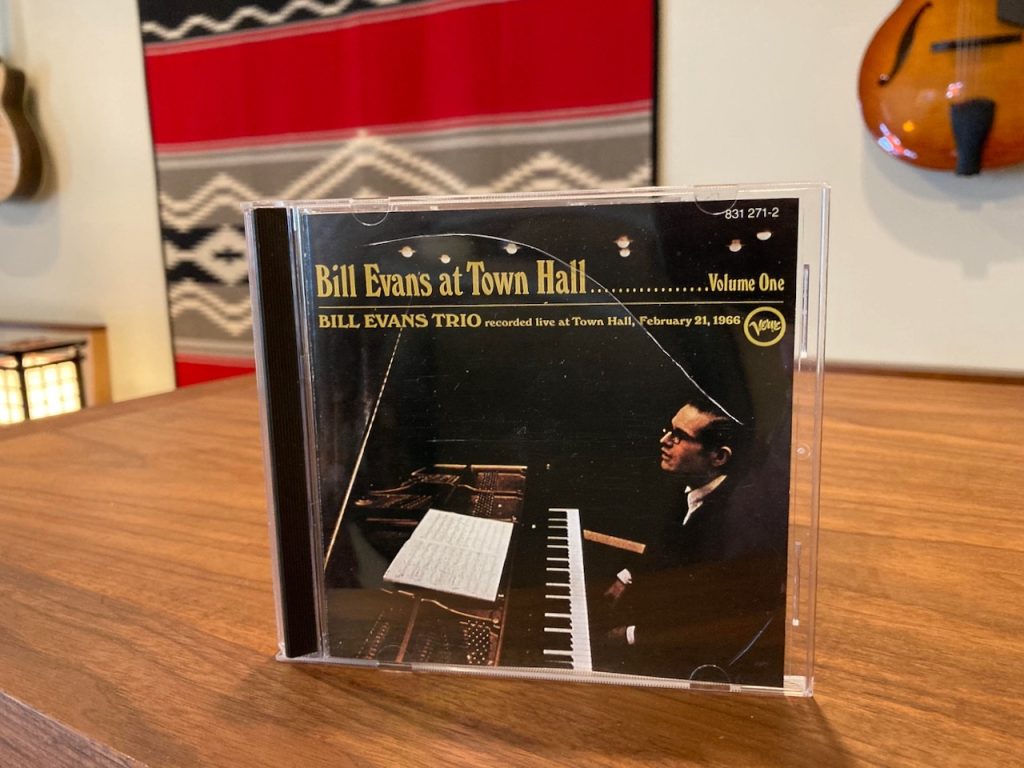If you're not familiar with the Duelund Coherent Audio's tinned-copper cable product line you can catch up by reading my An Adventure in the Art of Tone with the Duelund Coherent Audio DCA Series of Tinned-Copper Cables article in Positive Feedback HERE.
When I went to fetch the link for the article, just now, I was rather shocked to read that I wrote that article all the way back in 2017. Gasp! How time flies.
A little tinned-copper wire background: Back in the early days of wire production tinned-copper wire was used because it wouldn't corrode, which was important for long term reliability in electronics and industrial applications.
Insulators of that time weren't very easy to work with either, as they adhered to the wire, making them difficult to strip. The tinned-copper wire eased strippability, which made it much easier to work with.
For those reasons tinned-copper wire was used in a lot of electronics, like vintage hifi components (my own vintage McIntosh kit, for example), wiring in electric guitars, guitar amplifiers, and in many industrial applications where long term reliability was important.
It turned out that tinned-copper wire also contributed particular sound quality properties that enhanced the tonal nature of vintage hifi kit and electric guitars, although we didn't realize it at the time.
As better insulators were developed that eased strippability, the hifi electronics & guitar world switched over to copper wire with no tin plating, as it was cheaper than tinned-copper wire.
Except for the most demanding industrial applications where longterm reliability was tantamount, tinned-copper wire went the way of the dodo bird.
Guitarists noticed the change first, and wondered where the tone went. A small side industry arose that provided tinned-copper wire & PIO capacitors for guitarists in an effort to reclaim the tone (example HERE). We started rewiring our electric guitars with tinned-copper wire, adding PIO caps, and voilà, the musical tone was back!
In a parallel audio universe, professional audio engineer & hifi enthusiast, Shirokazu Yazaki, had found that NOS Western Electric 16GA tinned-copper wire made for tonally excellent speaker cables, and that Belden 8402 tinned-copper microphone cable did the same for interconnects.
Yazaki-san thought the sound & musical quality of the cables was very live-like and "real", and that sort of tonal realness was instrumental in his pursuit of achieving "real sound" in his home audio system. The art of tone.
Yazaki-san recommended I try the combination of WE16GA and Belden 8402, and I really liked the resulting tonal balance in my audio systems. I even rewired my Tannoy Westminster Royal SE loudspeakers internally with WE16GA.
I started writing about how much I enjoyed the tonal properties of tinned-copper wire in my audio systems here at Jeff's Place, and inadvertently caused a wave of worldwide interest in it.
The available stocks of the NOS Western Electric 16GA wire rapidly rose in price, and just as rapidly sold out. Oops.
There was still huge interest in the WE16GA tinned-copper wire, but now there was no more to be had. Bummer.
Back in 2013, Frederik Carøe of Duelund Coherent Audio, and I, had collaborated on a crossover project for my Tannoy Westminster Royal SE loudspeakers. The improvement in sound quality from the Duelund CAST crossovers was dramatic, and I still enjoy them immensely to this day, over a decade later.
Frederik had been watching when I rewired my West's and Duelund CAST crossovers with the WE16GA, and witnessed all the fuss about the tinned-copper wire that had resulted from my writing about it, and that there was no more to be had.
Frederik decided that he could make a contemporary version of the WE16GA, and even improve upon its insulation by using an oil-soaked & baked cotton insulator to cover the tinned-copper wire.
The price was also very affordable, which all of us frugal hifi enthusiasts appreciated.
A huge thank you to Frederik for bringing his nuevo tinned-copper tone wire to all of us audio enthusiasts at an affordable price!
The DCA16GA wire was born, and I thought it was every bit as good, even better, than the original NOS Western Electric 16GA wire that inspired it.
Over time the Duelund tinned-copper cable product line expanded, and in addition to the original DCA16GA, there is now DCA26GA, DCA20GA, DCA12GA, and now - the subject of this article - DCA10GA.
The differing tonal properties of the various gauges allowed us audio experimenters to tailor the final voicing to our system needs and personal preferences.
The tonal properties vary with the gauge number. The larger gauge numbers (skinnier wires) tend to sound more brightly lit and detailed, where the smaller gauge numbers (fatter wires) tend to sound richer and smoother.
The applications are as diverse as your imagination, but here are a few I've tried:
- DCA26GA: This skinny wire can be used as headshell leads, or for tonearm wires I suppose (haven't tried that). It allows for an abundance of musical nuance to be transmitted from the cartridge to components downstream from the cartridge.

Headshell leads made with the Duelund DCA26GA tinned-copper solid-core wire and Cardas headshell clips.
- DCA20GA: This makes for excellent interconnects, either shielded or unshielded. Same gauge number of wire as used in the Belden 8402 tinned-copper microphone cable. Works well for USB interconnects too. Provides a more nuanced presentation with subtly richer tone than the Belden 8402. Particularly useful for improved tone when shielded interconnects are not needed.
- DCA16GA: This makes for excellent speaker cables and interconnects. For interconnects it provides more warmth & body than the DCA20GA, when that is needed for brighter or more forward components, but gives up some of the neutrality and nuance of the DCA20GA. As speaker cables this is the classic tinned-copper sound, which I would describe as the cable equivalent of a single-ended-triode (SET) sound for amplifiers, with vibrancy, nuance, musicality, and live-like presence being its trademark sound traits. An excellent choice for those who enjoy high-sensitivity loudspeakers and SET amplification, bringing out the strengths of those designs in rather vivid and live-like fashion. This is the speaker cable I use for my Tannoy Westminster Royal SE loudspeakers, and my vintage Altec loudspeaker collection.
- DCA12GA: This makes for excellent speaker cables, and provides a richer and smoother presentation than the DCA16GA for when that is needed. Useful for audio systems that need more naturalness through the upper-midrange & presence regions of the audio spectrum.
- 600V versions of the DCA16GA and DCA12GA: When more voltage capability is required than the baked cotton-in-oil insulator of the above cables, these cables CAST-like insulator provides it. Useful for internal wiring in audio components, or for building power cables. These 600V versions have a little less nuance, and are a little smoother and mellower sounding, than their cotton-in-oil insulator counterparts in speaker cable applications.
- DCA10GA: The subject of this article. Read on.
One thing I should mention is that tinned-copper cables tend to sound a little "rough" until they get some run-in time on them, and equilibrate into the audio system.
Figure on a 100 hours or more depending on the gauge number, so exercise your patience until they settle down in your audio system. Then sit back and enjoy the tone!
It has taken me longer than I was anticipating to get adequate run-in time on the Duelund DCA10GA loudspeaker cables, due to other competing review & personal needs.
And I'm not completely sure they're fully run-in yet. They are getting there, but I am still hearing a few tonal artifacts that suggest to me these fatter cables would benefit from further run-in time. I think it might be related to their AWG, where the fatter cables take longer to run-in than skinner cables.
Hint: If you decide to try the DCA10GA for speaker cables prepare to be patient while running in the cables, as they may taker longer than the usual 100 hours before they completely settle down. Also, if you swap the cables in & out of the system while accumulating run-in time, it tends to take more hours to complete than if you just leave them in place and don't touch them.
For these listening impressions I used my primary music system (above) with Westminster Royal SE loudspeakers (with Duelund CAST crossovers), Audio Note (UK) Tomei 211 SET integrated amp (listening impressions & feature review to come), and Audio Note (UK) CD 5.1x CD player. Stellar performers all.
Typically I use Audio Note (UK)'s silver interconnects & speaker cables with Audio Note (UK) components, as that's what they are optimized for.
However, for obvious reasons, for these listening sessions I used Belden 8402 tinned-copper microphone cable interconnects from the CD 5.1x to the Tomei, and alternated between DCA16GA and DCA10GA speaker cables as I gathered comparative listening impressions for the DCA10GA.
I don't recommend you mix & match silver & tinned-copper cables, as they have very different tonal properties.
If I want to hear what a particular cable set is all about, I stick with the same conductor material from source to speakers, thus the Belden 8402 & DCA16/10GA cables from source to speakers for these listening impressions.
Some of you might be wondering how the tinned-copper cable set differs aurally from the silver cable set with the CD 5.1x and Tomei 211 SET.
Basically, tinned-copper cable sets sound richer, smoother, and warmer, while the silver cable sets are more neutral, resolving, and nuanced. That's during listening sessions via the "comparison-by-contrast" method of subjective listening, with music recorded across the span of the eras of the recording arts.
As an aside, I recommend using bare wire terminations for speaker cables rather than spades or other connectors. Bare wire sounds better. And it's cheaper too. A win-win.
In my listening adventures with the Duelund DCA10GA speaker cables, I used the DCA16GA speaker cables as my benchmark for comparison, as that's what I normally use with my high-sensitivity Westminster Royal SE loudspeakers and SET amplifiers.
Here's a few examples of listening impressions for you to consider.
The Golden Age of Singing (Nimbus Records) compilations on CD are from the Prima Voce catalog of 78 transfers from the acoustic era of the recording arts (1877-1925).
These acoustic era recordings include performances from some of the greatest male & female opera singers - Enrico Caruso, Francesco Tamagno, Emma Eames, Adelina Patti, Nellie Melba, Antonina Nezhdanova, etc. - singing some of the most beloved opera selections of the acoustic era of recording.
The album description says "Even at its earliest, the gramophone could capture the ring and body of the human voice, particularly of a tenor or baritone, with thrilling immediacy."
While the high- and low-frequency extension of these acoustic era recordings doesn't match that of the best from later recording eras, and they are a bit noisier, what was captured is absolutely stunning in terms of musical immediacy and engagement.
I think it's important to listen to these early acoustic era recordings if you want to achieve a balanced presentation when voicing your audio system.
If you can't enjoyable listen to these early recordings and be amazed by their musical & emotional immediacy it's likely that something is amiss with the overall spectral balance of your hifi rig. It is a good test.
Typically, acoustic era recordings cover from about 100 to 2500 Hz of the audio spectrum, which represents about the mid-point of the bass range (60 - 250 Hz) to the initial part of the upper midrange (2000 to 4000 Hz).
That's a low-fidelity audio spectrum range in comparison to modern recordings, but it actually still serves the fundamental frequencies (100 to 400 Hz) of those early operatic vocals quite well, preserving much of the body and warmth of their vocals.
There's typically about a 30 dB signal to noise ratio on acoustic recordings, but that doesn't tell the whole story, as you can hear quite a lot of musical information below the noise floor on these recordings, so there's more music to be heard than the signal to noise ratio implies.
If it sounds fatiguing to listen to acoustic recordings, its not the presence of surface noise that is the likely issue, rather it is more likely there is a spectral imbalance in the way the hifi rig portrays that initial part of the upper midrange.
Here's what I heard with the DCA16GA and DCA10GA speaker cables.
DCA16GA: The music emerged from a relatively narrow monaural sound image, but wider than you might think if you haven't listened to 78 transfers before, at about 6 meet in width in my room.
Vocals and instruments had 'softer' image outlines than contemporary recordings, but were still separated in space so that they appear in different lateral and depth positions of the soundstage.
There was also a large sense of ambient space in the recording, but perhaps not to the same extent as in the best of more modern recordings.
Vocals were dynamic, tonally rich, captivating to hear, and full of drama. The music comes across as beautiful, inspiring, and emotionally charged. I really got a sense for how impressive an operatic dramatic tenor Francesco Tamagno (1850 – 1905) was, for example, and how his vocals transcended the acoustic media to project out into my listening room.
The female vocals of Celestina Boninsegna's (1877 – 1947) dramatic operatic soprano singing had a bell-like purity that sent chills up my spine. There's just something about these acoustic era recordings that brings the dead to life in a spectrally charged way. I love it.
The noise on these acoustic recordings was somewhat variable, but was fairly low in level in most cases, and was rendered rather softly with the DCA16GA, so wasn't really a distraction to enjoying those incredible musical performances from yesteryear.
DCA10GA: As with the DCA16GA speaker cables, the acoustic era music emerged from a relatively narrow monaural sound image, but the sound image was a bit wider with DCA10GA.
With the DCA10GA I noticed that the sense of the ambient space in the recordings was enhanced and filled my listening room to a greater distance.
The vibrancy of imaging on these early recordings was enhanced with the DCA10GA, and I heard an aural "glow" around the images, which wasn't really very audible with the DCA16GA.
Listening to operatic bass singer Pol Henri Plançon (1851 – 1914) was impressive, and his rich, smooth, powerful, and articulate bass singing was remarkably beautiful.
As I was listening it occurred to me that the volume sounded louder with DCA10GA. Not sure why, as I didn't change volume levels, but that was my subjective impression.
Also, with the DCA10GA, it had more of a 'Technicolor' aural presentation, with a more vivid and brilliant expanded 'tone color' palette that enhanced the beauty of the singing, as well as the images of vocalists and instruments upon the soundstage.
Overall the DCA10GA was a little more forward sounding than the DCA16GA, a little more brightly lit, which surprised me. I thought it would the other way around - warmer, richer, and darker.
I also noticed that big dynamic swings sounded a touch too big for my tastes with DCA10GA, and I think I preferred the slightly softer presentation of the DCA16GA in terms of dynamics on these acoustic era 78 transfers.
The DCA10GA seemed to give me a deeper glimpse into the recordings, recovering more information, and yet still sounding musical and emotionally engaging.
In terms of the midrange, it seemed to me that with the DCA10GA the vocals had more of a sense of articulation and purity, but were a little more forward and harder sounding, which hints that the first part of the upper midrange was being slightly emphasized.
I suspect this aspect of the sound quality will mellow out some if the DCA10GA cables are left in place for a longer period of run-in time.
My DCA16GA speaker cables have a ton of hours on them, and don't exhibit that mild forwardness, for example.
Bill Evans at Town Hall is a beautiful live magnetic era recording of the Bill Evans Trio at Town Hall in NYC, featuring Bill Evans (piano), Chuck Israels (bass), and Arnold Wise (drums).
DCA10GA: The audience applause at the beginning and end of "I Should Care" didn't sound quite as natural as I would like it to, but was fairly close to "real".
The higher-frequency notes of Bill Evans' piano sounded a little hard and forward (but not egregiously so), and Chuck Israels' bass solo sounded resolved, articulate, powerful, and almost tonally "real" (perhaps just a little lean).
That aside, the overall musical momentum was excellent, which lent an engaging and "authoritative" feel to the Trio's playing.
Dynamics were also excellent, over the range of the softest to the loudest notes.
Imaging was excellent, but positions of the images on the soundstage were a little odd laterally, but that's just due to the way they were positioned during the live performance, I suppose.
DCA16GA: The audience applause at the beginning and end of "I Should Care" sounded natural and live with the DCA16GA.
The higher-frequency piano notes that sounded a little hard and forward with the DCA10GA had a more natural tonal balance with the DCA16GA.
Chuck Israels' bass solo sounded more tonally natural with the DCA16GA, and a little more like a bass does in life.
I heard more bloom to the notes with the DCA16GA, and the harmonics trailed off for longer, which I liked. Harmonics with the DCA10GA sounded a little etched in comparison.
I also thought the ambient sense of the recording venue sounded a little more natural with the DCA16GA.
Overall, the DCA10GA brought a more vivid "hifi" quality to Bill Evans at Town Hal, and I was always aware that I was hearing a recording.
Conversely, the DCA16GA allowed me to slip into a musical reverie more easily, allowing me to forget I was listening to a recording, and allowing me to feel like I was at Town Hall hearing a live performance.
In short, the DCA10GA emphasized the aspects of the recording itself more, while the DCA16GA emphasized the musical performance more, and managed to sound more like a live musical performance, with this particular complement of audio equipment.
One last album example. I bought the new Analogue Productions "Hybrid Stereo SACD" of Steely Dan's Aja that was just released.
This release was mastered by " ... Bernie Grundman from an analog, non-Dolby EQ'd quarter-inch 15 ips tape copy ..." according to the Acoustic Sounds website.
In typical Bernie Grundman and Acoustic Sounds fashion, the sound quality is superb, even remarkable, and deftly shows off the effort that went into producing this spectacular example of the recording and musical arts.
This is an unapologetic stereo magnetic era studio recording produced to wow listeners with its sonic bag of tricks. There were something like 40 session players that contributed to the recording, with all those different musical textures and 'sonic wows' being woven into its rather lengthy songs, to hold listeners attention.
Aja won the Best Engineered Recording from the 20th Annual Grammy Awards for all the technical recording engineering wizardry involved.
So Aja doesn't document a live musical performance as much as it documents a complex musical surrealist creation in the recording studio, with pristine studio recording quality.
DCA16GA: The first thing I noticed with the DCA16GA was how wide and deep the soundstage was, like 14 feet wide in my living room, with a sense of ambient space extending well beyond that in every direction.
There were lots of instrumental (and vocal) images positioned across the sound-field width, with images projected in front of the loudspeakers (!), and way into the soundstage depths, as well as way up into the height dimension.
Aural images from Aja came from everywhere, swirling around in the soundscape, filling my room with a surrealist sound-field of aural images that could make one think that Salvador Dali produced Aja instead of Gary Katz.
It's weird to hear instruments and vocals anywhere from 2 to 12 feet off the floor in a sort of dreamscape style of recording, the audio equivalent of Salvador Dali's surrealist paintings with a full display of "... technical skill, precise draftsmanship, and the striking and bizarre images ..." (Wikipedia)
Aja is Salvador Dali's Freudian inspired, The Great Masturbator, set to music. In other words, Aja is an 'audiophile spectacular' style of recording with lots going on to intrigue and wow the listener who owns a high-fidelity audio system.
The DCA16GA really brought out the essence of Aja and all its musical surrealism. I was wowed. I was impressed with this incredible studio recording, I was impressed with Bernie Grundman's artful mastering.
I actually didn't have much of an impression about Steely Dan's jazz-rock musical chops, as I was too distracted by the amazing studio recording work to think about the actual music.
Did you know 'Aja' means 'beauty mark' in Japanese, and 'goat' in Hindi?
Aja is a stunning surrealist masterpiece of the recording & musical arts from the stereo magnetic era.
DCA10GA: The first thing I noticed with the DCA10GA on Aja was that it had a more vivid 'Technicolor' style of tonal balance than with the DCA16GA, one that vividly portrays timbral textures and tone colors.
The DCA10GA actually works well for the surrealistic nature of Aja, and maybe even better than the DCA16GA at making Aja sound more like a musical performance, instead of emphasizing Aja as an amazing work of the studio recording arts. That's the opposite of what I was expecting from the DCA10GA.
The DCA10GA provides a strong sense of spaciousness in Aja, and more of a sense of liquidity in the way music flows along. There's also an interesting liquid sounding continuousness between images.
With the DCA16GA images pop out of a black background in startling fashion, but with the DCA10GA that black background is a liquid and flowing essence that connects to the images like ripples connecting raindrops falling in the smooth surface of a pond.
Summing Up
I found it hard to pigeon-hole the performance the DCA10GA in comparison to the DCA16GA, which I am very familiar with.
The DCA16GA sound quality traits reminds me of the SET amplifier equivalent in a cable, with vibrancy, nuance, musicality, and live-like presence being its trademark sound traits.
I thought I would hear a particular trend in the DCA10GA's performance, then it would surprise me by not following that trend when going from recording to recording.
On really good recordings like Aja the DCA10GA was remarkable, being rich, timbrally sophisticated, intensely colorful in tone color terms, expansive, and dyanmically dramatic in the way it presented the music. The DCA10GA would surprise me with vivid aural images that would pop out of the mix unexpectedly.
The DCA10GA also seemed to provide a deeper glimpse into the fabric of recordings, and I could hear more nuance emerge from the depths, nuance that I didn't notice with the DCA16GA.
On lower fidelity recordings it seemed that the DCA16GA was more complimentary by being a little more forgiving of sound quality issues, like record surface noise on 78 transfers, for example, or the leanness/hardness that pops up in a particular region of the audio spectrum from time to time on certain instruments and vocals.
At times I could hear a little hardness emerge from recordings of certain instruments (and vocals) in the presence region with the DCA10GA, then that hardness seemed to vanish.
I'm not sure what was going on with that. Was the DCA10GA showing me a little anomaly in the quality of a given recording? Or does it just need some more run-in time to settle down and mellow out?
Both the DCA10GA and DCA16GA make a compelling case for themselves in the way they portray the recordings and the musical performances they document.
Tinned-copper cables seem to benefit from a quite a lot of run-in time, and I suspect that the DCA10GA speaker cables would benefit from even more run-in time than I've had time to put on them to get their full measure.
Due to all my writing and reviewing commitments I don't know if I'll be able to get the DCA10GA all the way there in terms of run-in time, but I'll keep you posted on any developments if I can.
Ok, that's enough for now. As always, thanks for stopping by, and may the tone be with you!




